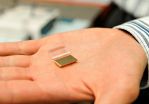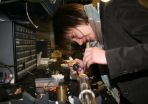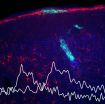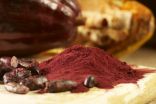Newly donated blood reduces complications from heart surgery, study shows
Patients receiving only 'new' blood had significantly fewer complications than those receiving blood collected more than 14 days before transfusion
2014-10-27
(Press-News.org) VANCOUVER ─ Heart surgery patients who received newly donated blood have significantly fewer post-operative complications than those who received blood that had been donated more than two weeks before their surgery, a study presented at the Canadian Cardiovascular Congress has shown.
The study examined records at the New Brunswick Heart Centre (NBHC) in Saint John for non-emergency heart surgeries performed over almost nine years, from January 2005 to September 2013, on patients who received red blood cells either during their surgery or afterwards and who stayed in hospital less than 30 days.
Of 2,015 patients, just over half (1,052) received only "new" blood, donated within 14 days of the transfusion, while the rest had received only or some "old" blood, donated more than 14 days before. Canadian protocols allow blood to be stored and used up to six weeks after it is donated.
After adjusting for differences in age, sex and other health conditions between the two groups of patients, the study found those given only new blood had fewer in-hospital complications such as re-operation for bleeding, ventilation longer than 24 hours, infection, renal failure and death. Overall the patients who received new blood fared significantly better than those who received some or all old blood.
"The findings show that we need to pay attention to the age of the blood we give cardiac surgery patients," says Dr. Ansar Hassan of the department of cardiac surgery at NBHC, the study's senior author.
Given the benefits to patients of timely cardiac surgery, Dr. Hassan believes surgeries should not be postponed if new blood is not available. "Perhaps more importantly, we need new studies to determine what is driving this relationship between the age of blood and the outcomes we are seeing."
Dr. Hassan notes that previous non-Canadian studies have reached contradictory conclusions on this subject, which was a reason this study was undertaken. The question is important to cardiac surgeons because their work is one of the foremost users of blood products, with 30 to 50 per cent of cardiac surgery patients requiring transfusions. The average cardiac surgery requires five pints of blood.
Heart disease and stroke is the leading cause of hospitalization in Canada, accounting for almost 17 per cent of total hospitalizations. More than 25,000 cardiac surgeries are performed in Canada each year. These procedures – including coronary artery bypasses, valve replacements and heart transplants – save and extend the lives of thousands of Canadians every year.
"Cardiac surgery creates heart disease survivors," says Dr. Beth Abramson, Heart and Stroke Foundation spokesperson, author of Heart Health for Canadians. "We need to ensure outcomes are as successful as possible. This study is an important reminder for Canadians to donate blood so that blood products are available for these surgeries."
She reminds all Canadians that 80 per cent of premature heart disease can be prevented with healthy lifestyle choices. "It is possible to reduce our risks with changes to five controllable behaviours: physical inactivity, smoking, stress, poor diet and excessive alcohol consumption."
The Canadian Cardiovascular Congress is co-hosted by the Heart and Stroke Foundation and the Canadian Cardiovascular Society.
INFORMATION:
Statements and conclusions of study authors are solely those of the study authors and do not necessarily reflect Foundation or CCS policy or position. The Heart and Stroke Foundation and the Canadian Cardiovascular Society make no representation or warranty as to their accuracy or reliability.
About the Heart and Stroke Foundation
The Heart and Stroke Foundation's mission is to prevent disease, save lives and promote recovery. A volunteer-based health charity, we strive to tangibly improve the health of every Canadian family, every day. Healthy lives free of heart disease and stroke. Together we will make it happen. heartandstroke.ca
For more information and/or interviews, contact the
CCC 2014 MEDIA OFFICE AT 778-331-7618 (Oct 25-28).
Amanda Bates
Curve Communications
amanda@curvecommunications.com
office: 604-684-3170
cell: 604-306-0027
Gina Vesnaver
Curve Communications
gina@curvecommunications.com
office: 604-684-3170
cell: 604-317-6129
Congress information and media registration is at http://www.cardiocongress.org
After October 28, 2014, contact:
Jane-Diane Fraser
Heart and Stroke Foundation of Canada
jfraser@hsf.ca (613) 691-4020
ELSE PRESS RELEASES FROM THIS DATE:
2014-10-27
This news release is available in French.
In less than a minute, a miniature device developed at the University of Montreal can measure a patient's blood for methotrexate, a commonly used but potentially toxic cancer drug. Just as accurate and ten times less expensive than equipment currently used in hospitals, this nanoscale device has an optical system that can rapidly gauge the optimal dose of methotrexate a patient needs, while minimizing the drug's adverse effects. The research was led by Jean-François Masson and Joelle Pelletier of the university's Department ...
2014-10-26
In an analysis that included approximately 35,000 participants, genetic predisposition to elevated low-density lipoprotein cholesterol (LDL-C) was associated with aortic valve calcium and narrowing of the aortic valve, findings that support a causal association between LDL-C and aortic valve disease, according to a study appearing in JAMA. The study is being released to coincide with its presentation at the Canadian Cardiovascular Congress.
Aortic valve disease remains the most common form of heart valve disease in Europe and North America and is the most common indication ...
2014-10-26
Stanford, CA— Proteins are the machinery that accomplishes almost every task in every cell in every living organism. The instructions for how to build each protein are written into a cell's DNA. But once the proteins are constructed, they must be shipped off to the proper place to perform their jobs. New work from a team of scientists led by Carnegie's Munevver Aksoy and Arthur Grossman, describes a potentially new pathway for targeting newly manufactured proteins to the correct location. Their work is published by The Plant Cell.
The team's discovery concerns ...
2014-10-26
October 26, 2014, New York, NY – Ludwig Oxford researchers have discovered a key mechanism that governs how cells of the epithelia, the soft lining of inner body cavities, shift between a rigid, highly structured and immobile state and a flexible and motile form. Published in the current issue of Nature Cell Biology, their study shows that a tumor suppressor protein named ASPP2 functions as a molecular switch that controls this process and its reverse, both of which play a critical role in a number of biological phenomena, including wound healing, embryonic development ...
2014-10-26
PROVIDENCE, R.I. [Brown University] — Superconductors and magnetic fields do not usually get along. But a research team led by a Brown University physicist has produced new evidence for an exotic superconducting state, first predicted a half-century ago, that can indeed arise when a superconductor is exposed to a strong magnetic field.
"It took 50 years to show that this phenomenon indeed happens," said Vesna Mitrovic, associate professor of physics at Brown University, who led the work. "We have identified the microscopic nature of this exotic quantum state of ...
2014-10-26
Scientists have created cells with fluorescent dyes that change color in response to specific neurochemicals. By implanting these cells into living mammalian brains, they have shown how neurochemical signaling changes as a food reward drives learning, they report in Nature Methods online October 26.
These cells, called CNiFERs (pronounced "sniffers"), can detect small amounts of a neurotransmitter, either dopamine or norepinephrine, with fine resolution in both location and timing. Dopamine has long been of interest to neuroscientists for its role in learning, reward, ...
2014-10-26
Lasers – devices that deliver beams of highly organized light – are so deeply integrated into modern technology that their basic operations would seem well understood. CD players, medical diagnostics and military surveillance all depend on lasers.
Re-examining longstanding beliefs about the physics of these devices, Princeton engineers have now shown that carefully restricting the delivery of power to certain areas within a laser could boost its output by many orders of magnitude. The finding, published Oct. 26 in the journal Nature Photonics, could allow ...
2014-10-26
NEW YORK, NY (October 26, 2014)—Dietary cocoa flavanols—naturally occurring bioactives found in cocoa—reversed age-related memory decline in healthy older adults, according to a study led by Columbia University Medical Center (CUMC) scientists. The study, published today in the advance online issue of Nature Neuroscience, provides the first direct evidence that one component of age-related memory decline in humans is caused by changes in a specific region of the brain and that this form of memory decline can be improved by a dietary intervention.
As ...
2014-10-26
MOUNT WILSON, Calif.–Astronomers at Georgia State University's Center for High Angular Resolution Astronomy (CHARA) have observed the expanding thermonuclear fireball from a nova that erupted last year in the constellation Delphinus with unprecedented clarity.
The observations produced the first images of a nova during the early fireball stage and revealed how the structure of the ejected material evolves as the gas expands and cools. It appears the expansion is more complicated than simple models previously predicted, scientists said. The results of these observations, ...
2014-10-26
BOSTON –– Scientists say they have identified in about 20 percent of colorectal and endometrial cancers a genetic mutation that had been overlooked in recent large, comprehensive gene searches. With this discovery, the altered gene, called RNF43, now ranks as one of the most common mutations in the two cancer types.
Reporting in the October 26, 2014 edition of Nature Genetics, investigators from Dana-Farber Cancer Institute and the Broad Institute of MIT and Harvard said the mutated gene helps control an important cell-signaling pathway, Wnt, that has been ...
LAST 30 PRESS RELEASES:
[Press-News.org] Newly donated blood reduces complications from heart surgery, study shows
Patients receiving only 'new' blood had significantly fewer complications than those receiving blood collected more than 14 days before transfusion





